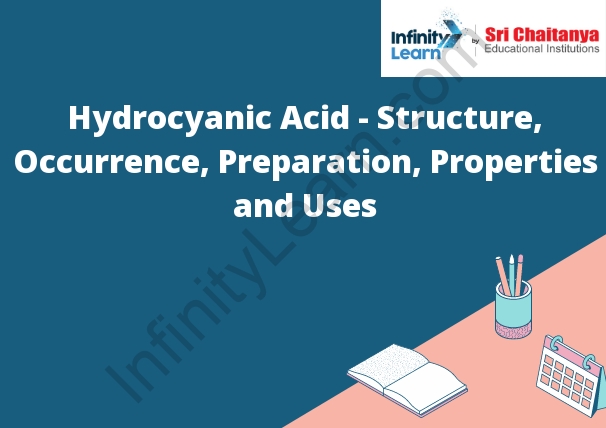Table of Contents
hydrocyanic-acid
Hydrocyanic acid is a colorless, volatile, and very poisonous liquid. It is made by the reaction of hydrogen and carbon monoxide. Hydrocyanic acid is used in the manufacture of a variety of chemicals, including plastics, dyes, and pharmaceuticals. It is also used as a fumigant to kill pests. Hydrocyanic acid is very dangerous and can cause death if it is inhaled or swallowed.

HCN Structure
HCN has a trigonal planar molecular geometry with the carbon atom located at the center. There are three nitrogen atoms located at the corners of the triangle. The bond angles are approximately 120 degrees.
HCN Occurrence
HCN occurs in nature as a result of the combustion of organic matter and as a product of the decay of certain microorganisms. It is a colorless, poisonous gas with a pungent, bitter taste. HCN is very soluble in water and can be carried long distances by wind. It is explosive in concentrations of 4-12%.
HCN Preparation
HCN can be prepared by the reaction of ammonia and chloroform in the presence of a catalytic amount of acid. The reaction produces a mixture of products that includes HCN, chloroformate esters, and ammonium chloride.
HCN Physical Properties
The physical properties of HCN are:
• colorless gas
• slightly sweet odor
• boiling point: 26.6 degrees Celsius
• freezing point: minus 15.5 degrees Celsius
• molecular weight: 27.03
• density: 0.905 grams per liter
HCN Chemical Name
2-Amino-3-methyl-1-butanol
2-Amino-3-methyl-1-butanol is an organic compound with the formula C4H10NO. It is a colorless liquid that is soluble in water. It is produced on a large scale as a precursor to various pharmaceuticals.
Uses of HCN
The gas HCN is used in a number of industrial applications. It is used as a welding gas, to produce plastics, and in the manufacture of dyes and other chemicals. It is also used as a refrigerant.









